Blog
Enhancing Cross-Departmental Collaboration with Kanban05 Sep 2024

To achieve success in an interconnected business environment, effective collaboration across various departments and specialties is crucial. However, it can be challenging to ensure seamless cooperation among diverse teams—each with its unique processes, priorities, and workflows. That is where a visual project management framework, such as Kanban, can offer a game-changing perspective. By leveraging comprehensive Kanban boards with swimlanes, WIP limits, and a range of additional teamworking and task-sharing features, your organization can significantly enhance collaboration, and streamline workflows, to ultimately achieve better outcomes.
How Kanban strengthens cross-departmental collaboration?
Kanban centers on visualizing work, limiting work in progress (WIP), and optimizing flow. The Kanban board visually represents the work process, with task cards moving through stages like To Do, Doing and Done.
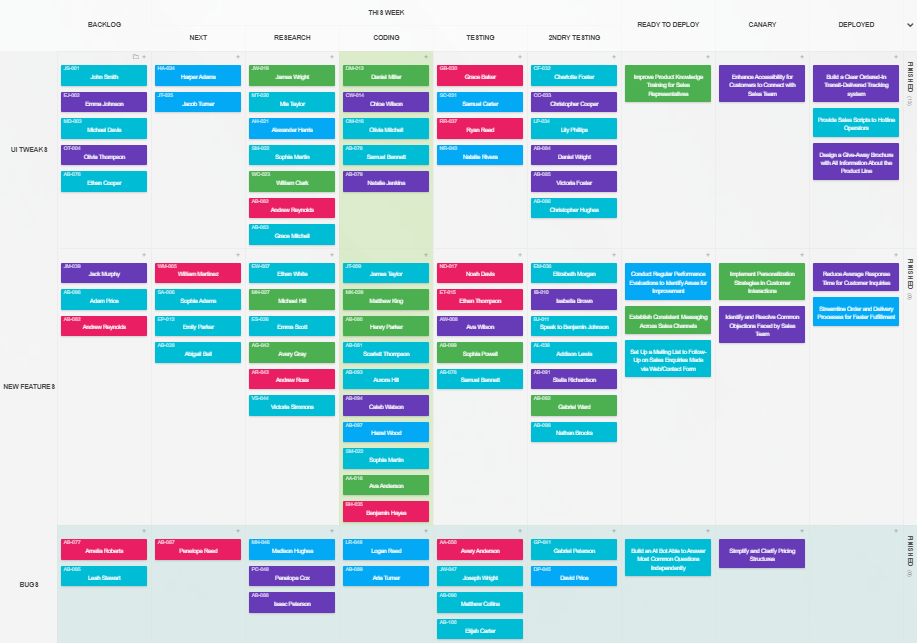
The board becomes a central hub for all project-related tasks, offering a clear overview of what needs doing, who is responsible, and where potential bottlenecks may occur. When multiple departments work toward a common goal, a well-structured Kanban board fosters transparency and accountability.
- Centralized communication for unified project view and real-time updates:
Kanban boards provide a consolidated view of ongoing projects, ensuring all stakeholders, regardless of their department, are informed about progress. This transparency helps everyone stay aligned and understand the broader context of their tasks.
Any changes or updates to tasks are instantly visible on the board, allowing teams to respond quickly to shifts in priorities or deadlines. This responsiveness is crucial for maintaining momentum and addressing issues as they arise. - Enhanced visibility and easier handovers across teams and departments:
Different departments can have individual boards or share a board with designated swimlanes. A Kanban system enables teams to see how their tasks align with others, fostering a collaborative environment where everyone works towards shared objectives.
With high visibility, handovers between departments become smoother. For example, once the product team completes a feature, the marketing team can seamlessly take over for promotion. This interconnected system also allows for comprehensive process analysis, making it easier to identify dependencies and areas for improvement.
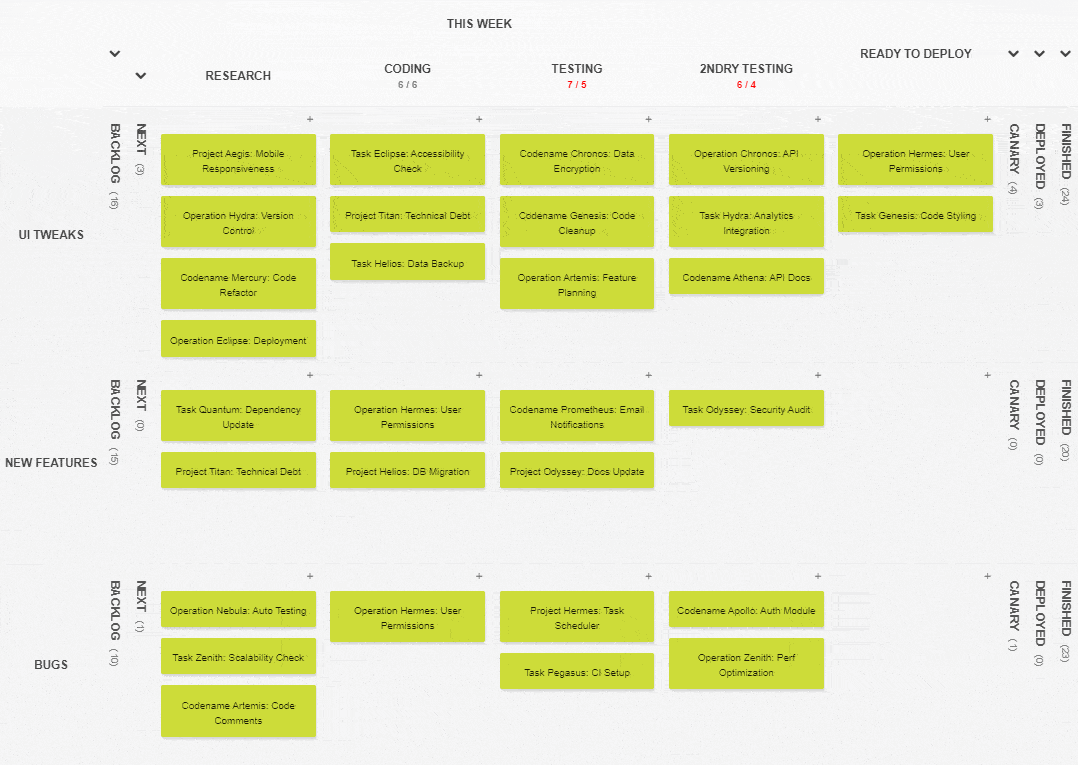
Optimizing workflows with swimlanes
Swimlanes, the horizontal rows on a Kanban board, enhance its utility by categorizing tasks based on department, priority, or other criteria. This additional layer of organization simplifies the management of complex projects involving multiple teams.
Department-specific swimlanes:
By using separate swimlanes for each department, teams can easily identify their tasks while remaining aware of their impact on the broader project. This division helps prevent overlap and ensures everyone understands their role in the project's success.
Swimlanes also help departments prioritize tasks, enabling them to manage their workload more effectively, regardless of its connection to other teams' processes.
Cross-functional swimlanes:
Swimlanes can also be organized by project phases, such as Planning, Development, Marketing, and Support, cutting across departmental lines. This approach encourages cross-functional collaboration and ensures everyone can track progress and address potential issues early.
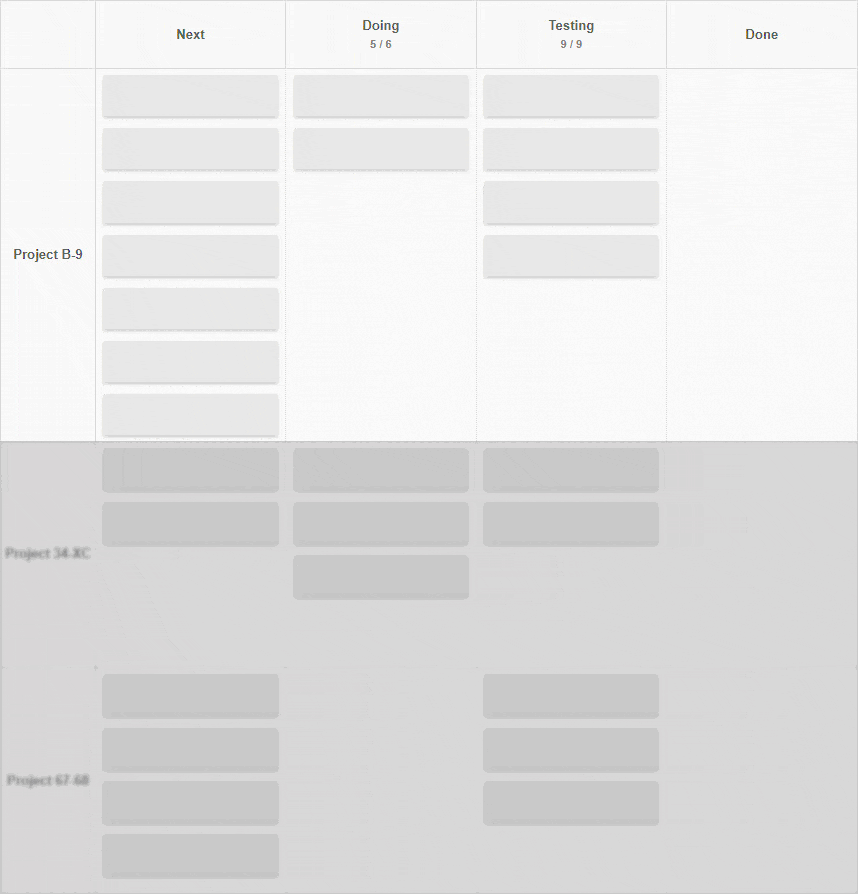
Leveraging Kanban board features for process improvement
While physical Kanban boards can work wonders, online boards unquestionably offer greater flexibility and customization. For instance, kanbantool.com's advanced features such as time tracking, global search, and task dependencies enhance workflow efficiency to a greater extent, particularly in larger organizations.
All-projects search for instant information access:
A global search feature allows team members to quickly find specific tasks, attachments, or assignments across all Kanban boards. This reduces the time spent searching for information, allowing teams to focus more on execution.
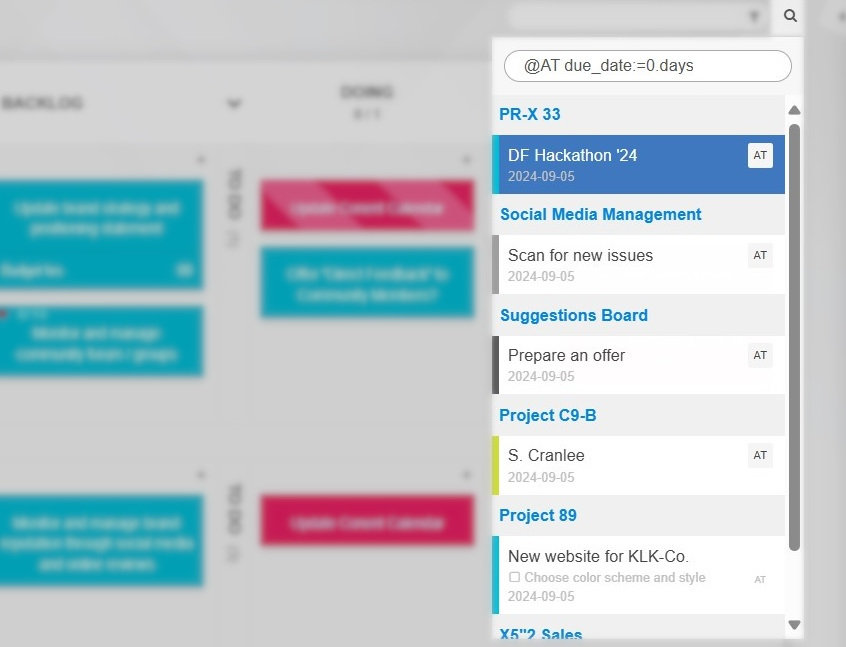
Task dependencies for complex projects coordination:
Task dependencies ensure that certain tasks are completed before others begin, helping to manage complex projects. For example, the product team must finalize a feature before the marketing team can create promotional materials. By setting up these dependencies, teams can better coordinate and plan their work, preventing bottlenecks and improving resource allocation.
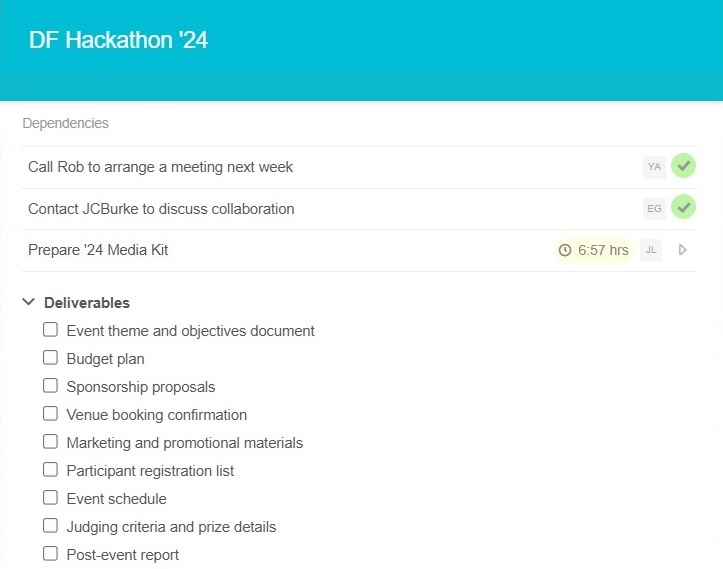
Features tailored to your team's needs:
Kanban boards can be customized with various optional features, such as AI assistants, recurring tasks, and card icons. This flexibility allows teams to choose the tools that best suit their needs, creating a tailored workflow that enhances productivity.
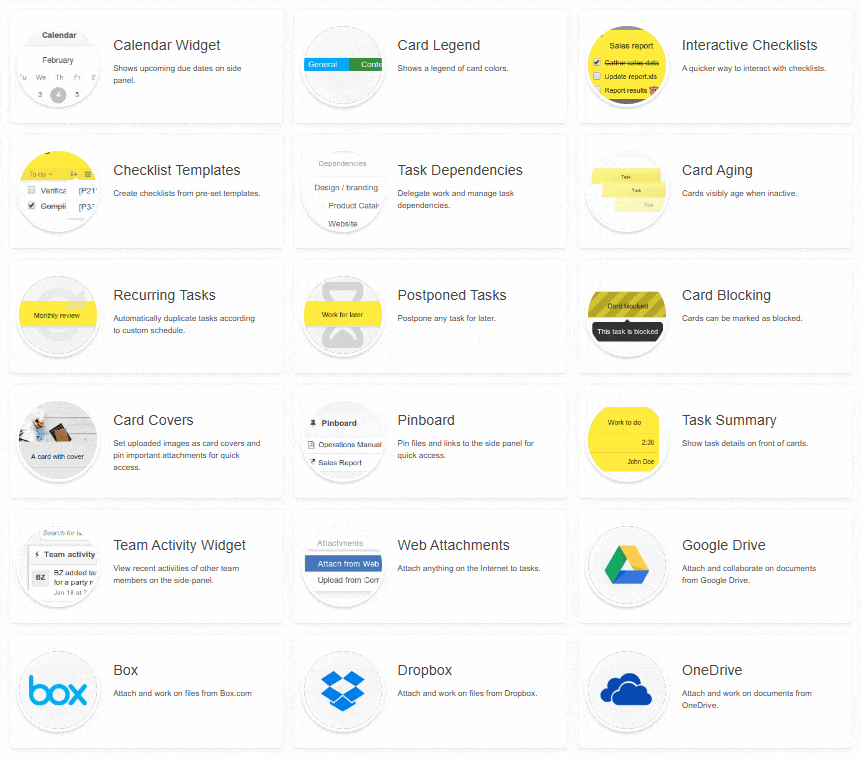
Conclusion: Unlock Kanban's full potential!
Kanban is more than just a project management tool—it’s a framework that can transform how your organization members collaborate. By leveraging Kanban boards, swimlanes, global search, and additional features, your company can break down silos, enhance cross-departmental communication, and ensure that all teams align toward common goals. Embracing Kanban can improve internal processes, and drive innovation, agility, and success in the ever-competitive market.
Sign up for a 14-day free trial
to test all the features.
Sign up now and see how we can help
your organization deliver exceptional results.